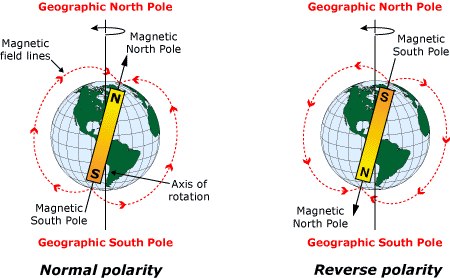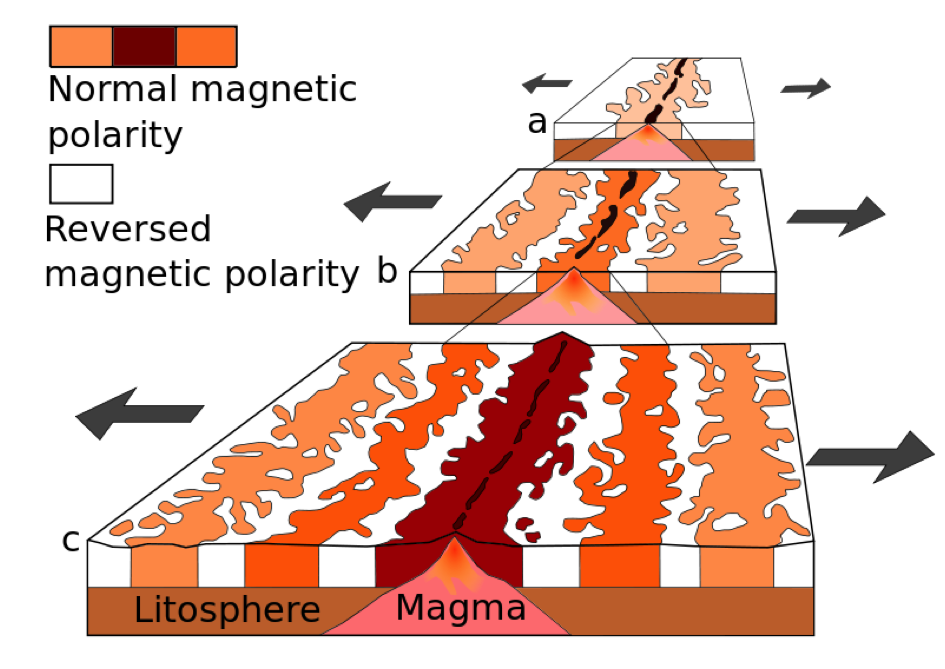1.3 Magnetic Striping
1/3
Earn XP
Description and Tags
How does magnetic striping support the plate tectonic theory?
Name | Mastery | Learn | Test | Matching | Spaced |
|---|
No study sessions yet.
4 Terms
What is normal and reverse polarity?
Normal Polarity
magnetic North points roughly towards the
geographical North
magnetic South points roughly towards the
geographical South
Reverse Polarity
magnetic North points roughly towards the
geographical South
magnetic South points roughly towards the
geographical North
Overtime, Earth’s polarity has flipped multiple times
alternating between normal and reverse polarity

What is magnetic striping?
the zebra-like pattern where
there’s strips of normal polarity rocks
alternating alongside strips of reversed polarity rocks on the seafloor
it’s symmetrical on both sides of the
mid-ocean ridge
∴ stripes of rock on the seafloor with alternating magnetic properties
occurs on

How does evidence of magnetic striping support the plate tectonic theory? (1/2)
1) Presence of Basaltic Rocks
basaltic rocks from the oceanic crust (FYI)
are volcanic rocks formed from iron-rich lava
contains iron-rich magnetic materials
when the iron-rich lava erupts from the centre of the mid-ocean ridge
it cools and solidifies
→ its magnetic materials point towards Earth’s magnetic North
recording evidence of Earth’s polarity at that time
How does evidence of magnetic striping support the plate tectonic theory? (2/2)
2) Symmetrical Zebra-Like Magnetic Pattern on both sides of the Mid-Ocean Ridge
zebra-like pattern is symmetrical on either side of the mid-ocean ridges
shows that this is not a random occurrence
∴ supports the plate tectonic theory as it provides evidence that the plates move
as oceanic plates diverge away from each other
1) iron-rich lava erupts from the centre of the ridge
the lava cools and solidifies
→ forming new oceanic crust
2) the crust is then pushed in both directions away from the centre of the ridge
as the oceanic plates move apart
3) when Earth’s polarity reverses
the rocks record the reversals
4) over time, a symmetrical zebra-like magnetic pattern forms
supporting the fact that plates move during seafloor spreading